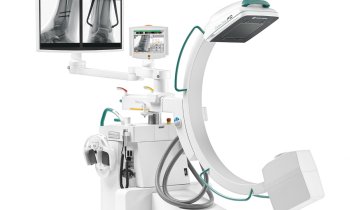Surgical checklist saves lives
Dot M McSherry of i.t. Communications, reports from the USA
As part of a global Safe Surgery Saves Lives programme, a simple, short checklist of guidelines for safe surgical procedures developed by the World Alliance for Patient Safety of World Health Organization (WHO) has produced dramatic results in the first eight hospitals that tested it.
Inpatient complications were reduced on average by 4.0% and the rate of death from surgical complications dropped by 0.7%. The results were reported in the January 29, 2009 issue of The New England Journal of Medicine.
The goal of the Safe Surgery Saves Lives Challenge is to improve the safety of surgical care around the world by defining a core set of safety standards that can be applied in all countries and surgical settings. This is the second global safety challenge initiated by the World Alliance for Patient Safety, which was founded by WHO in October 2004. The first challenge undertaken was to reduce infection on a global basis through a hand hygiene campaign, designed to increase awareness and convince healthcare professionals to wash their hands after every patient encounter.
According to WHO, data from 56 countries in 2004 showed that the annual volume of major surgery was estimated at 187-281 million operations, or one for every 25 people alive. In industrialised countries, the rate of complications from surgery range from 3-17% for patients admitted to hospitals for overnight stays. Approximately 0.4% to 0.8% of these patients die from surgical complications. No statistics are available for surgeries performed on outpatients who are not subsequently admitted into hospital wards.
In 2008, the WHO published guidelines identifying practices to ensure the safety of surgical patients worldwide. They included recommendations from almost 100 international experts, and contained technical information about safe surgical procedures for use worldwide. The guidelines were based on the premise that, regardless of the sophistication of the surgical setting, the most critical resource of the surgical team is its team members: nurses, anaesthetists and surgeons. The consensus of the experts was that a surgical team working effectively can avert a considerable proportion of life-threatening complications, and that operating room personnel worldwide have had little guidance and structure for fostering effective teamwork and minimising risks for surgical safety.
An international group of physicians formed the Safe Surgery Saves Lives Study Group, and created a 19-item checklist to reduce the risk of major surgical complications. Eight hospitals were selected to test the checklist. They were selected on the basis of their geographic distribution within WHO regions, and represented a diverse set of socio-economic environments in which surgery is performed. The selected hospitals were large, ranging in size from 371 beds at a district hospital in Tanzania to a 1,800 bed hospital in the Philippines.
The checklist requires an oral confirmation, by the surgical team, of completion of basic steps for ensuring safe delivery of anaesthesia, prophylaxis against infection, and effective teamwork. It was designed to be used at three specific times: before a patient is administered anaesthesia, immediately before any surgical incisions are made, and before the patient is removed from the operating theatre.
The checklist was introduced to members of the surgical team in their local language over a period of time ranging from one week to one month. A uniform set of major complications were defined, and a group of six safety measures were used to indicate adherence to the checklist. These included: oral confirmation by the surgical team of the identity of the patient, the operative site, and the procedure to be performed; a sponge count if applicable; administration of prophylactic antibiotics within 60 minutes of surgery; evaluation of the patient’s airway before administering anaesthesia; use of pulse oximetry at the time of administering anaesthesia; and the presence of catheters before incision in cases involving an estimated blood loss of 500 ml or more.
Data collection began one week after checklist implementation and was gathered for 500 consecutively enrolled patients. Statistics about all major complications and/or death attributed to the surgery for up to 30 days following surgery were collected and compared with comparable data collected prior to checklist implementation. Statistics for 3,733 patients before checklist implementation and 3,955 patients for whom the checklist was used were analysed.
The results were impressive. At hospitals located in high-income countries, rates of surgical complications fell from 10.3% to 7.1%. At hospitals in middle and low-income countries, surgical complications fell from 11.7% to 6.8%. At high-income locations, the rate of death declined from 0.9% to 0.6% and at low income locations, from 2.1% to 1.0%. Use of the six safety measures increased to 56.7% from 34.2% in all eight hospitals.
While improvements may have occurred due to the surgical teams’ knowledge that they were being observed, few of the hospitals had a protocol in place requiring oral confirmation of the identity of the patient, the surgery to be performed, and physical marking of the location of the procedure. Only two of the safety measures required a financial investment — the use of antibiotics and the use of pulse oximetry. Hospitals in low income countries had these resources, but used them only intermittently before the checklist implementation.
The study shows that the Safe Surgery Saves Lives guidelines and the 19 item surgical checklist does indeed reduce the rate of debilitating and expensive to treat surgical complications, and the most undesired outcome: patient death. If indeed 234 million surgical procedures are performed annually, and if indeed the average percentage of deaths can be reduced by 0.7%, this means that 1,638,000 lives can be saved worldwide.
01.03.2009










